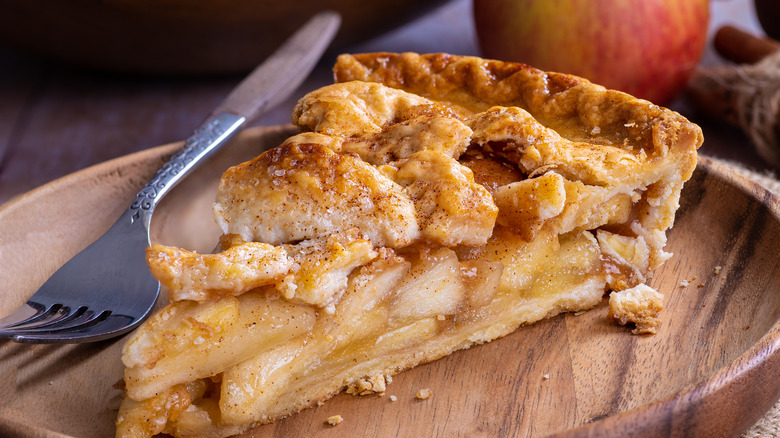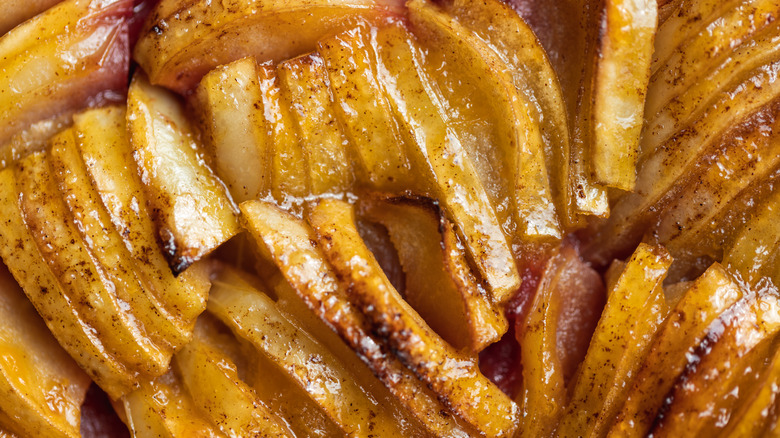The Absolute Best Way To Prepare Apple Pie Filling
Fruit pie recipes tend to share a simple filling of fruit, sugar, spices, and lemon juice, each ingredient serving to ensure that the fruit's underlying flavor is the star of the show. Apple pie filling often follows this simple and delicious formula, but the method of preparation makes all the difference when you cut into the final product. The order and manner in which you incorporate each filling ingredient dictates its texture, separating a runny mess from plump, gooey, cohesive perfection.
The best way to ensure that your pie filling is at its best is to use a rest and reduce method. This entails blending sliced apples with half the sugar in your recipe. Then, true to the name, you allow the mix to rest for an hour. Resting in sugar will help draw out the majority of apples' considerable water content to create a sort of sugary apple juice. You'll then drain the liquid into a saucepan to reduce, forming a caramel-colored syrup which you'll then add back to the apples along with the rest of the sugar and spices before baking.
While it does take extra time, the reduction will bring depth of flavor to the filling and turn all that potentially runny liquid into a thick syrupy binder. Plus, that hour-long rest will concentrate the apple flavor and ensure that the apples won't lose any more liquid while they cook, which could result in a large gap between the top crust and the filling.
More tips for great apple pie
While resting and reducing apple pie filling will maximize its flavor and cohesion, it takes more time. If your schedule is tight, the next best way to prepare your filling is to partially cook it, then let it cool before adding it to the crust and baking. Heating the apples will kickstart the caramelization process and integrate spices and sugars, while cooling will help congeal the juices.
Even if you want to skip any extra effort by simply mixing the filling ingredients together and baking raw apples, the least you can do is add a thickener. Flour, cornstarch, and tapioca flour are all tasteless and common binding agents that will help thicken the filling as it cooks.
Whichever method you choose to prepare the filling, apples will still release liquid. In fact a golden brown crust that reveals the bubbling liquid beneath is, to many, a classic visual indicator that the pie is ready to come out of the oven. The final measure you should take to ensure that your filling is gooey and cohesive comes after this step: let the pie cool. This has much the same effect on the sugary juices as the fridge does on gelatin, with the cold temperatures helping it turn semi-solid. Whatever juices remain can be blended into that indispensable scoop of vanilla ice cream atop your slice.

